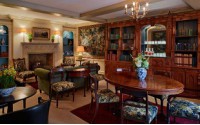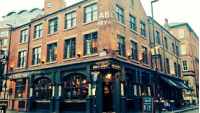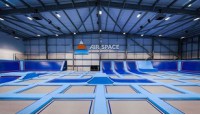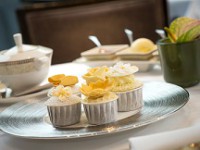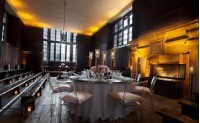I enjoyed an interesting weekend going through the Sunday Times ‘Ultimate 100 British Hotels’ – judged by their writers to be the best hotels in Britain. I was particularly interested in the ‘City’ section - in particular two recent openings I had never heard of:
Batty Langley’s Spitalfields, London
Batty Langley’s is named after a house and garden designer who lived in Georgian times. Batty’s influence is to be seen all over the house and many interior features owe their inspiration to his handbooks. The hotel took decades to restore, recreating the interiors of the eighteenth century. Guests are advised to expect ‘antiques, four posters, ruby-rich rugs and silk swagging in the 29 bedrooms’.
Batty Langley’s is located just outside the ancient walls of the City of London. Spitalfields in early times was the site of the mediaeval priory of St Mary Spital, founded in 1197. Part of the brickwork of the priory survives in the basement of the hotel.
Batty Langleys has three private events rooms – only small but they will accommodate up to eight delegates for a meeting. The nearest tube station is Liverpool Street. Details
Abel Heywood Boutique Hotel, Manchester
Meanwhile in Manchester the Abel Heywood Hotel is another new opening I didn’t know about. Abel Heywood was a Mancunian Mayor who stood up for the Victorian working class.
The Abel Heywood Hotel is located in Manchester’s uber-trendy Northern Quarter and is quoted as being ‘no ordinary hotel’. It features leather booths and tobacco-stained anaglypta-style ceilings but the bedrooms are described as ‘quietly stylish with super-comfy beds’.
The Abel Heywood has 15 bedrooms and whilst it may draw its inspiration from the past – it is bang up to date with its service, offering free wi-fi. You will find it in Turner Street a five minute walk from the newly refurbished Manchester Victoria Station – which is well worth a viewing in itself. Details
- Details
- Published: 13 October 2015
- Hits: 4281
A vacant industrial unit near Manchester City FC’s Etihad Stadium in East Manchester could be converted into a large trampoline park if recently submitted plans go ahead. The trampoline park would be aimed at corporate clients as well as families and fitness fans.
It would include open jumping, dodgeball, foam pits, trick tracks and rebound fitness – activities that have a mass appeal.
The earmarked site has a floor area of 37,120 sq. ft. As well as a trampoline park the development would also include a café and 75 parking spaces. It is located at Riverpark Trading Estate in Riverpark Road, to the north east of the stadium and the Sportcity complex.
A decision is pending on this scheme.
Details: www.insidermedia.com
- Details
- Published: 07 October 2015
- Hits: 4392
We saw the Living Wall at The Rubens at the Palace in London when it was first unveiled. Now it is established and it looks fabulous.
Living Wall at The Rubens at the Palace is a 350 square metre exterior wall and home to a total of 10,000 herbaceous plants. The Living Wall is designed to provide waves of blossoming plants throughout the year. Plus, it provides a wildlife habitat and helps keep the hotel cooler in summer and warm in winter, and so is very environmentally friendly.
The Living Wall improves the air quality and aesthetics in that part of London. Furthermore it is a great talking point.
The plant list includes a wide variety of native species and those deemed by the Royal Horticultural Society as attracting insect pollinators – drawing bees, butterflies and birds, which are crucial in light of the decline in the bee population. Buttercups, two varieties of crocus and strawberries will particularly attract butterflies and bees. From spring bulbs to winter geraniums, the plants have been selected with seasonal colour in mind, ranging from blues to pinks, purples, whites and yellows.
The Living Wall was designed by Gary Grant of the Green Roof Consultancy Ltd and installed and maintained by TreeBox Ltd. Take a detour if you are in London with a few minutes to spare – you won’t be disappointed.
Details: www.rubenshotel.com
- Details
- Published: 01 October 2015
- Hits: 4882
Happy 50th Birthday to the Royal Garden Hotel in Kensington, London. From hosting England's World Cup winners back in 1966 and being part of the Beatles frenzy in 1968, to Justin Bieber hysteria in 2012, the Royal Garden Hotel has witnessed half a century of Kensington's thrills and spills. 1st August 2015 marked the start of their year-long anniversary celebrations.
The hotel is commemorating its 50 years with, amongst other things, a limited edition cupcake. Created by the award-winning executive head chef Steve Munkley and executive pastry chef Nicholas Hollands, the confectionary masterpiece brings to life the hotel’s golden moments from the last half a century – from its sporting and music heritage to the celebratory book and branded taxi especially commissioned to mark this milestone.
The limited edition cupcake will be available with the hotel’s Park Terrace restaurant afternoon tea menu.
Jonathan Lowrey, general manager at the Royal Garden Hotel says: “We pride ourselves on offering friendly and intuitive five star service, and so to reach this milestone is a real achievement for the hotel and its staff. This, along with our stylish and luxurious rooms, restaurants, and of course great Kensington location, has all contributed to our success over the past 50 years.”
Details: www.royalgardenhotel.co.uk
- Details
- Published: 02 October 2015
- Hits: 4280
The news that Harrow School had recently hosted its first pop-up event had us checking their conference and banqueting facilities.
Harrow School has six principal rooms available for receptions, dinners, parties, performances and corporate events. Needless to say they are only available at certain times of the year. Three rooms will provide a flavour of the facilities on offer.
The largest room at Harrow School is the Shepherd Churchill Hall where the school boys eat their meals during term time. It was built in 1976 and boasts views across London from Harrow-on-the-Hill. Shepherd Churchill Hall is a versatile space which will seat up to 250 guests for a dinner on round tables.
The other rooms are smaller but more historic including the Fourth Form Room. This room oozes history. It is the site of the school when it first opened in 1615. The boys carved their names on the walls until the practise was banned in the nineteenth century. The room will seat up to 10 guests for an exclusive dinner with fixed seating - seating which has been in place for nearly 400 years.
The Speech Room is the main assembly hall for Harrow School and is where Winston Churchill made one of his famous speeches during the Second World War. It is a tiered-seat venue built on the side of a hill. The majority of the seating is fixed but it is still sufficiently flexible to accommodate up to 230 guests for a dinner.
Harrow School itself is located in Harrow-on-the Hill, north-west London. Harrow-on-the-Hill station on the Metropolitan Line is the nearest tube station with Chiltern Trains operating a regular service into London Marylebone. The school is around 20 minutes by car from M25 and M40 motorways and 30 minutes from London Heathrow Airport.
Details: www.harrowschoolenterprises.com
- Details
- Published: 23 September 2015
- Hits: 4504
Page 28 of 43

